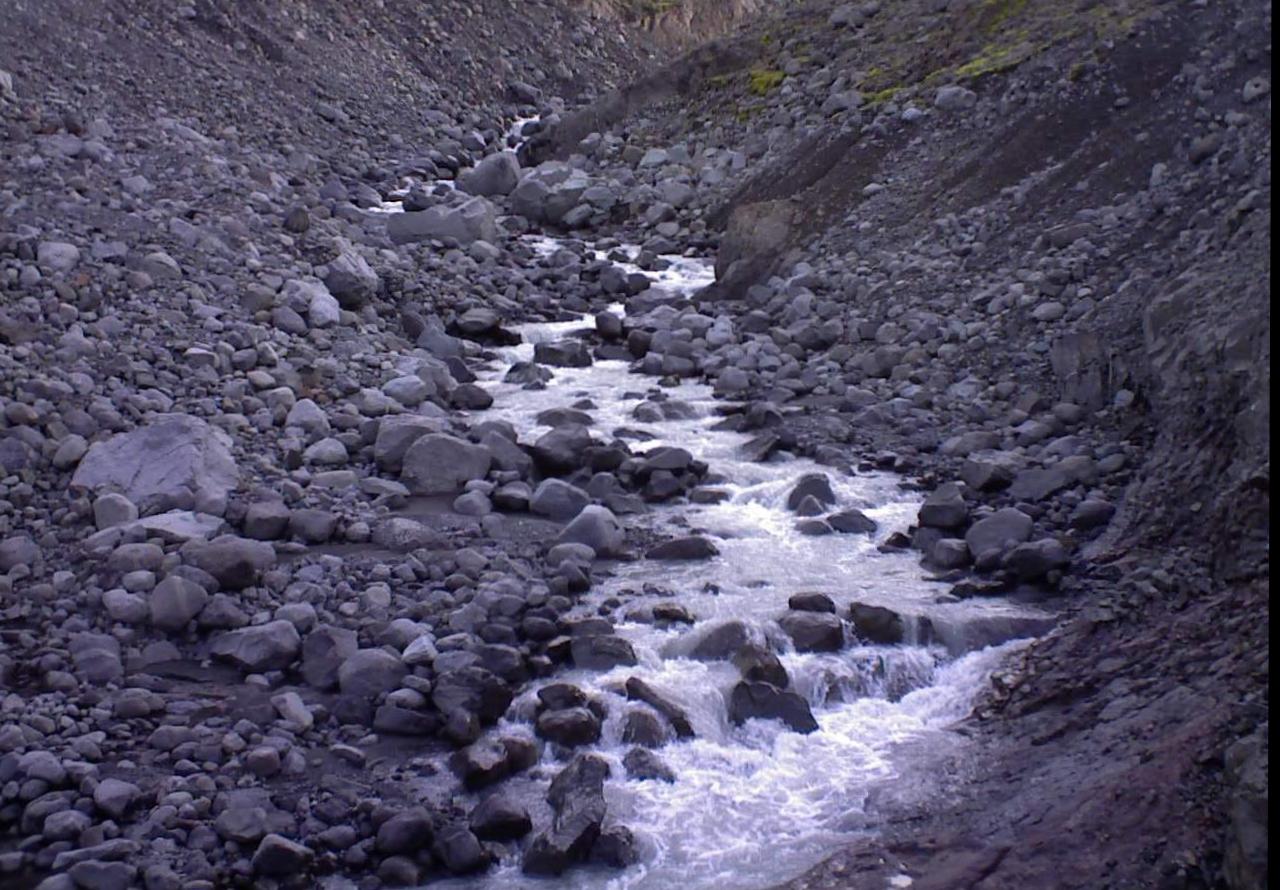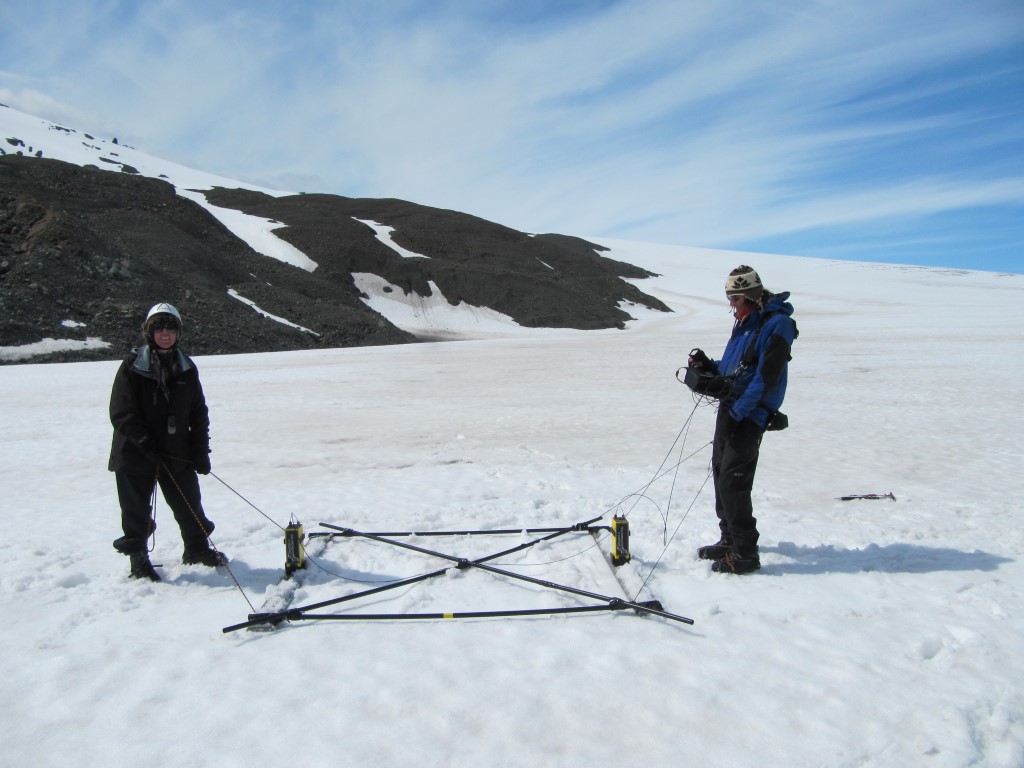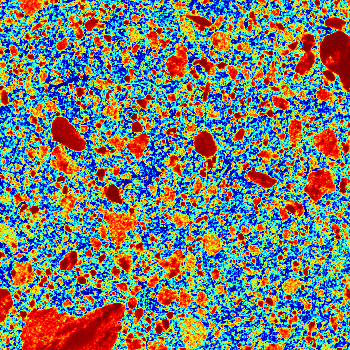This is a GPS tracker we quickly built as a test of tracking icebergs – it uses Satellite (Iridium) short text messages to send its location to us every 12hrs. Inside is a large lithium battery pack. The photo below shows a water test in the sink – just in case it ends up in the sea. We used a unit from YB Tracking. More info later!
2015 field trip
Siggraph paper shows Briksdalsbreen timelapse
A 2015 paper by University of Washington and Google used Briks’ as an example where mass observation via Flikr could be used to create long term timelapses. See their video on youtube.
There’s a lot of energy in a glacial outflow river!
The outflow river bed remained almost unchanged while it was monitored from Autumn 2012 to Summer 2013. However, sometime between July 2013 and July 2014, the flow became violent enough to move massive boulders, as these images from the bridge camera show.
Note the big boulder – about 1 m high – right of centre in the foreground of the earlier image, which has been swept out of shot a year or so later.
Summer 2014
The Glacsweb 4×4 collection!
Just added a new page collecting together most of the 4x4s we have used in Iceland
Sunrise over Skálafellsjökull
We have been analysing the time-lapse image sequences from the river camera. Mostly it recorded at 4-hour intervals, but for a couple of days in September 2012 it took pictures every minute – the sequence is shown here.
At about noon the river rises by a few centimetres. The change is hardly noticeable, but we can measure the level quite accurately with careful image analysis, and we can see it happening by watching the river start flowing over a rock in this video.
We would like to relate this to what is happening up on the glacier. One factor is when the sun falls on the ice, and we can work this out from a map of the terrain. Here we are using a digital elevation model from the ASTER instrument aboard the Terra satellite. (ASTER GDEM is a product of METI and NASA.) The animation shows sunlit areas on the glacier and surrounding mountains increasing as the sun rises on 25 September 2012.
Getting going on CT analysis of till texture
We’re investigating the texture of till using CT scans. This shows successive sections through a sample.
The first step in the analysis is to extract the shapes of the clasts (rock fragments) embedded in the sample. These show up mainly as red in the sections above. The shape below is a clast about 3 mm long.
Moraine Camera captures first snow of 2013
Base 2013 camera

This is the new view the Base station has for 2013 – with its new higher resolution webcam (this image was shrunk 50% for web speed) – the little camera board is made by e-con systems.












